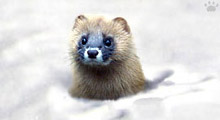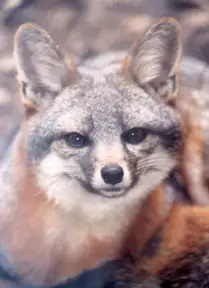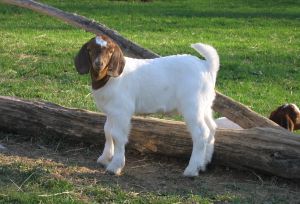Pronghorn
The pronghorn has often mistakenly been called an antelope. It is not even related to the antelopes of Africa or those of Asia. It is also not closely related to deer or goats or cattle.
Its ancestor’s fossils have been found on the American plains dating back millions of years. The miniature pronghorns were not taller than jack rabbits.
They were grazers and cud chewers like their modern descendents. Those male pronghorn’s horns were sharp and forked. They were solid bone and grew directly above the eyes. The females had no horns.

Pronghorn
Today pronghorns have horns also — not antlers as some mistakenly refer to them. Horns are present in both male and female. They are positioned above the eyes also.
They had other ancestors who evolved later who had lopsided horns that were multi-tined and these have been said to be the most unusual racks ever carried by a hoofed animal.
Either one side of the other would grow three or four times longer than the other horn and then branch out with three or four times.
The small horn on the other side grew straight out. The only reason put forth on this matter so far is that the display of horns made them look bigger to their enemies — from the front and from the side.
The pronghorns of today are social creatures that live in herds. A buck usually has several does. They mate in summer and next spring is the birthing time.
The doe will go find a secluded spot and has up to three babies.
She keeps the babies hidden for a few weeks, coming to them only to feed them and then keeping watch from a ways off to keep predators away. She is a fierce Mom when the little ones are threatened.

Pronghorn
When she brings them out, they get acquainted with all the other little ones born around the same time and all the little ones race around and butt heads and play.
Sometimes one doe will watch all the young ones while a group of Moms go off for some quiet time.
Pronghorns have amazing eyesight and can see clearly a good mile away. They are very fast animals who love to run and to race each other and they will race a car also.
They can travel at a speed of 60 miles pr hour. They have been known to race alongside of cars, then speed up and dash in front and across the road stop as if that was the end of the race.
They are animals who need the open spaces to live and run. They are shy and nervous animals who do not thrive in zoo. They are curious animals who will check out whatever interests them from a polite distance, whether it be, man or beast.
Pronghorns have such good eyesight that when another pronghorn sends out a “sun-signal”, meaning that the white hair on the rump is lifted and flashes white in the sunlight as they dash away from danger, it is seen by the others from a long way off.

Pronghorn
They have seven scent glands on their bodies which they use to send messages to other pronghorns.
They protect themselves from predators with the use of their hooves. Like many Mammals, they shed their coats in spring. They have a double coat, course on top and soft inner fur beneath.
The pronghorns are great swimmers. They are not jumpers, though and do not even jump over low fences.
Winter finds the herd headed for a sheltered valley. When snow gets deep there, they head up higher to hillsides which have been blown clear of snow.
Young pronghorns stay with the herd to have a better chance of survival.Find out more about the Pronghorn over at Wikipedia »


